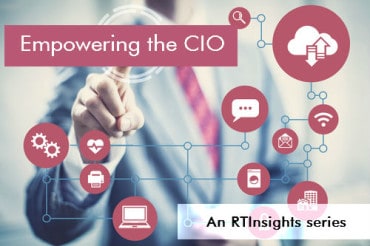
With the growth of various chatbots in social media, consumers are increasingly expecting to mimic private communications in real-time with companies, too.
In the age of constant text messaging and social media, consumers are not only beginning to demand but expect that enterprises communicate the same way they would as if they were speaking to them personally. Every end user communication today must meet the experience level of private communication. As a result of this expectation, enterprises now have to replicate this experience — with or without actual human interaction.
See also: How cognitive computing is changing customer service
With consumers having more choice about which communication channel to use, the line between private and enterprise communications is less defined than ever. Moreover, enterprises are feeling increased pressure to integrate more real-time communication throughout their customer engagement and to leverage new tools, such as bots, in order to provide a high level of customer service.
Private vs. enterprise communication
The private communication experience is exploding and consumers are starting to expect that enterprises behave similarly to the way a real person might. Take SMS, for example. The expansion from P2P (person to person) to A2P (the process of sending mobile messages from an application to a mobile user) can be explained by the new reality that consumers’ expectations and experience level in private communication have now become the standard.
Consumers message on the channel they prefer and then expect the enterprise to respond in real-time and through the same channel, never thinking about the complexity this represents to the enterprise. This is why businesses need to rethink their consumer-facing communications. They need to get the right mix of channels and find new ways to easily switch channels so that communication is seamless. It goes without saying that this mobile-first approach is required for satisfying consumers’ growing reliance on mobile communications and orchestrating all communication channels in a brand’s omnichannel customer engagement strategies. What’s still needed, however, is a better framework for enterprises to integrate key elements of private communications – without having to re-build everything from scratch.
Bots bring a human element in messaging
With the expanding popularity of social media and the changing expectations of consumers, it’s all too easy to demand instant responsiveness from enterprises. As a result, enterprises are increasingly under pressure to leverage new tools to deliver fast, reliable, and engaging customer service to consumers in the channel of their choice. And that’s where bots become necessary for providing a consistent experience across the enterprise. The choice is simple: Either you have one-on-one (P2P) support, which is not always possible on an enterprise scale, or you have intelligence in the background that is able to gather context so quickly that the reply is instantaneous and as close to what the one-on-one support could provide as possible.
Ideally, the future of customer services is offering consumers the ability to use the channel of their choice quickly and securely – and without missing a beat thanks to the assistance of bots.
Pulling from a robust ecosystem
Connecting with consumers in the same manner as their private communication takes more than just social listening — it requires responding appropriately, and with context. This requires many elements, including context-aware intelligence such as bots; channel orchestration via compatible APIs across social/messaging channels; and secure, global connectivity.
A robust platform (or a platform of platforms) is needed for those elements to work together and pull from various ecosystem players. Enterprises need to seek vendor partners that understand the new framework and can meet the growing needs of its deployments. Some of the world’s largest brands do marketing, commerce, and customer support on Facebook, Twitter, LinkedIn, and other social channels. But they lack in human-like intelligence and real-time interaction. Moreover, their deployments tend to be limited to certain markets, mostly due to the siloed reach of the social channel, unlike the ubiquity of SMS messaging.
To untangle the complexity of an enterprise-wide solution, enterprises need to truly embrace mobile-first channels such as SMS messaging and social channels – and enhance the end user’s experience with context-aware intelligence to mimic the human interaction. The end goal is to allow brands to have a fluid, engaging conversation with their customers and employees in real-time by meeting the experience level that feels most innate – their private communication.




























